Abstract
The dimorphic yeast Candida albicans, as a member of the fungi imperfecti, has been assumed to be in the haploid, or imperfect, state. The deoxyribonucleic acid content of this species has been measured by flow microfluorometry, a technique capable of analyzing single cells. These results were compared with flow microfluorometric deoxyribonucleic acid determinations on a series of strains of Saccharomyces cerevisiae of known ploidy (haploid, diploid, triploid, and tetraploid). These ploidy levels were readily distinguished by the flow microfluorometry procedure. By this criterion, C. albicans was found to contain a diploid amount of deoxyribonucleic acid. Ultraviolet radiation survival and chemical mutagenesis experiments support the conclusion that both clinically isolated and laboratory strains of C. albicans are diploid.
Full text
PDF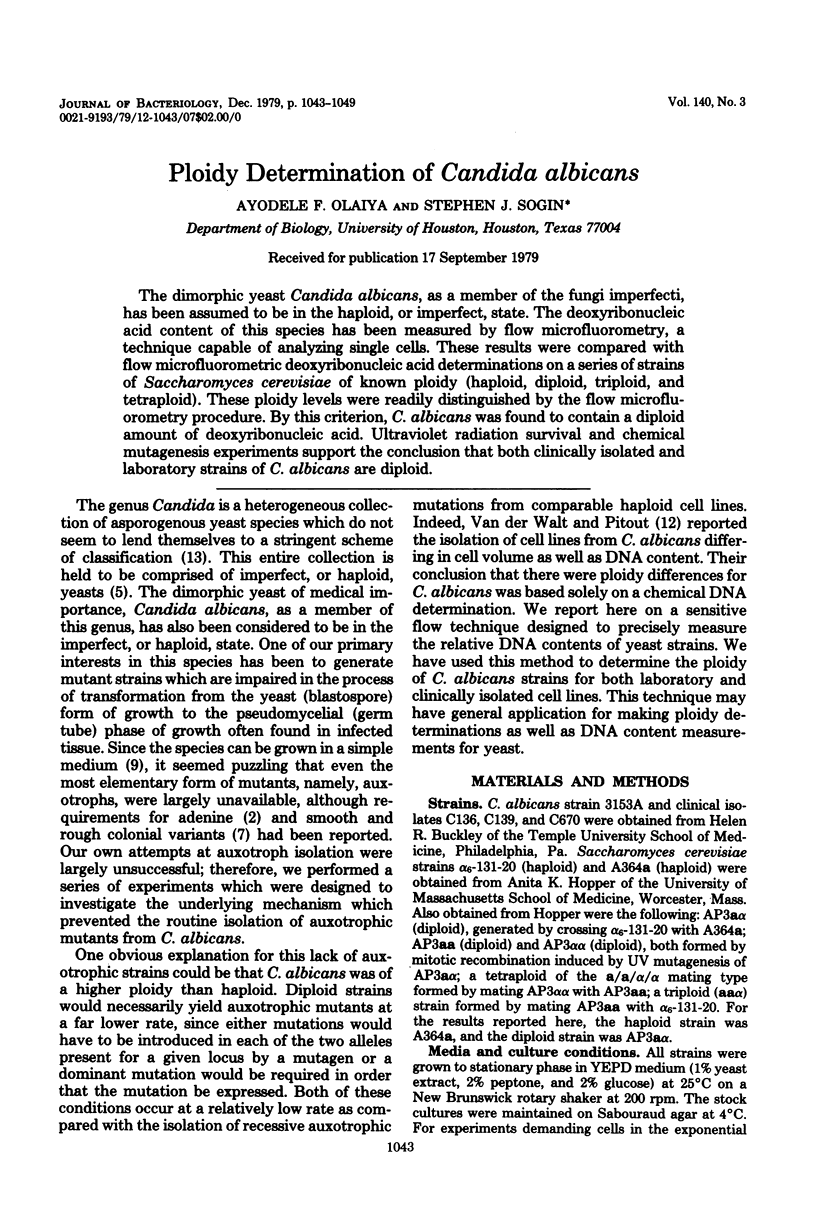
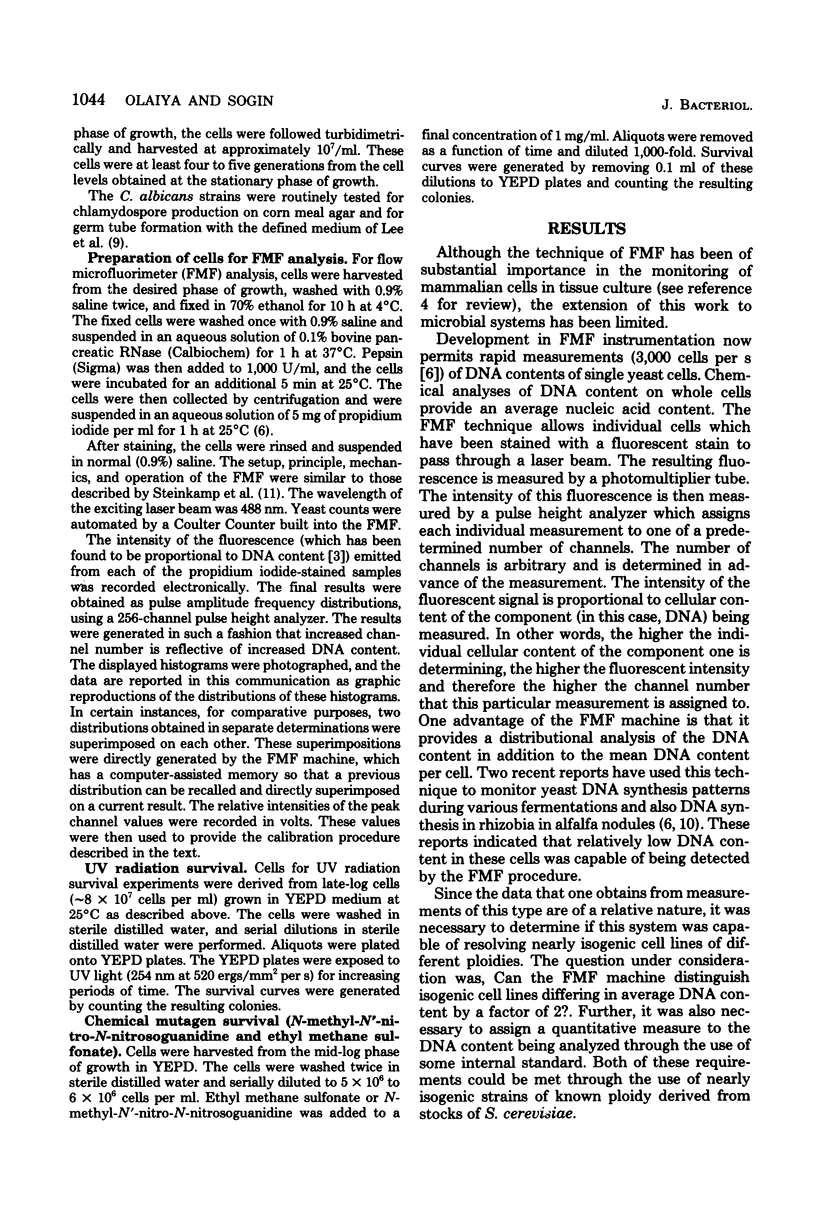
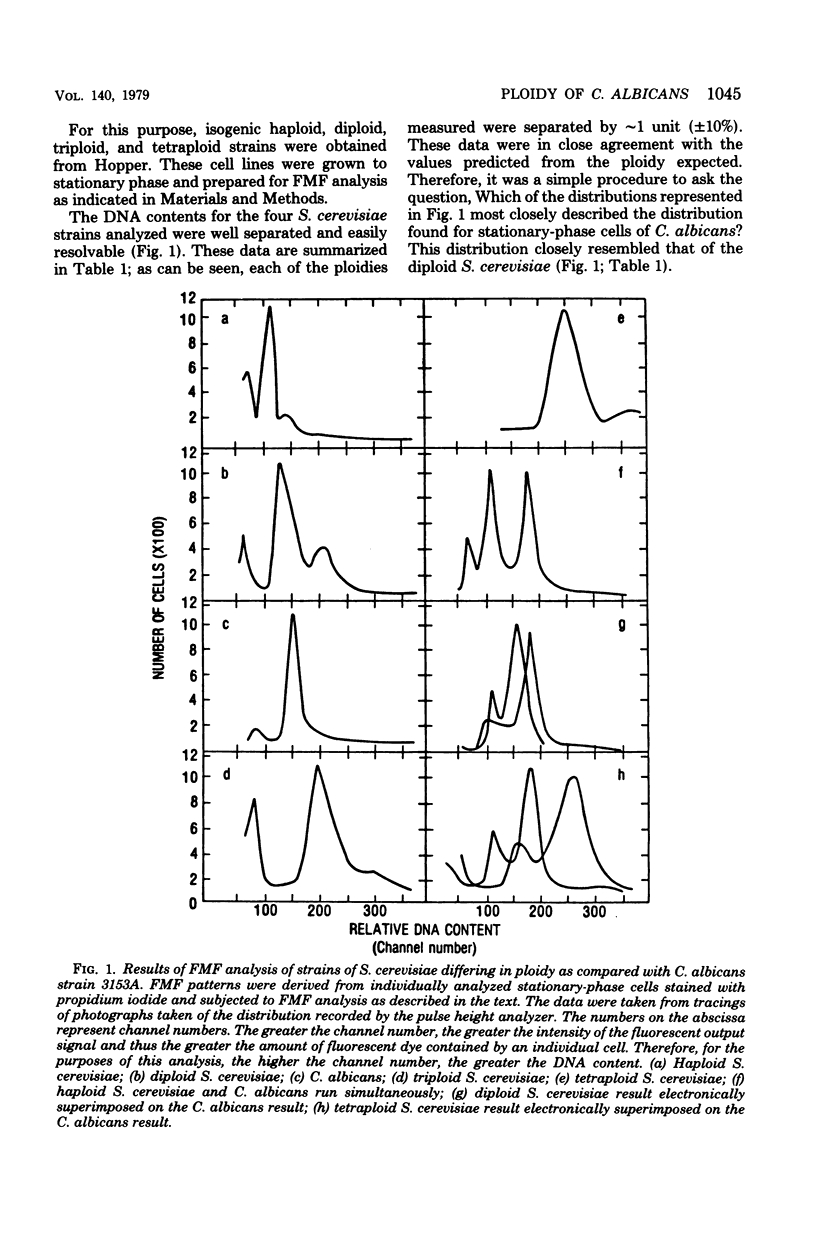
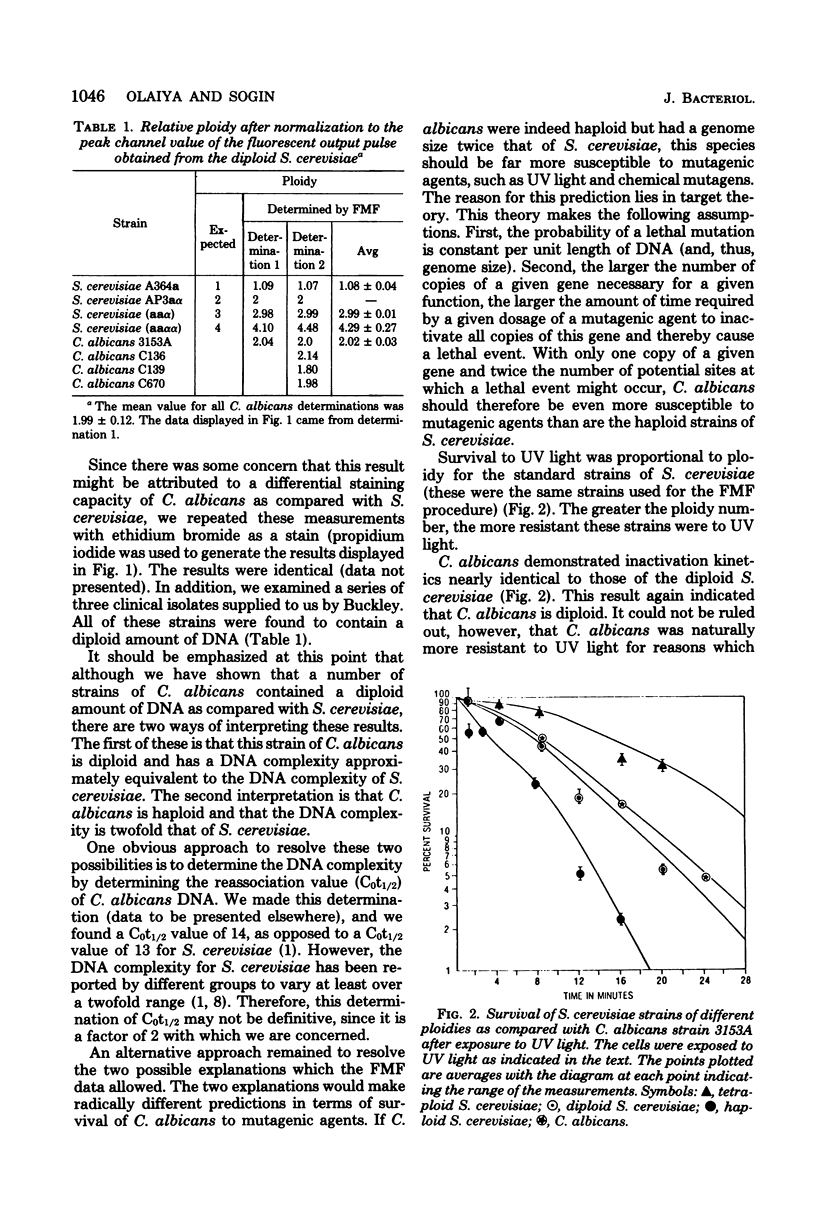
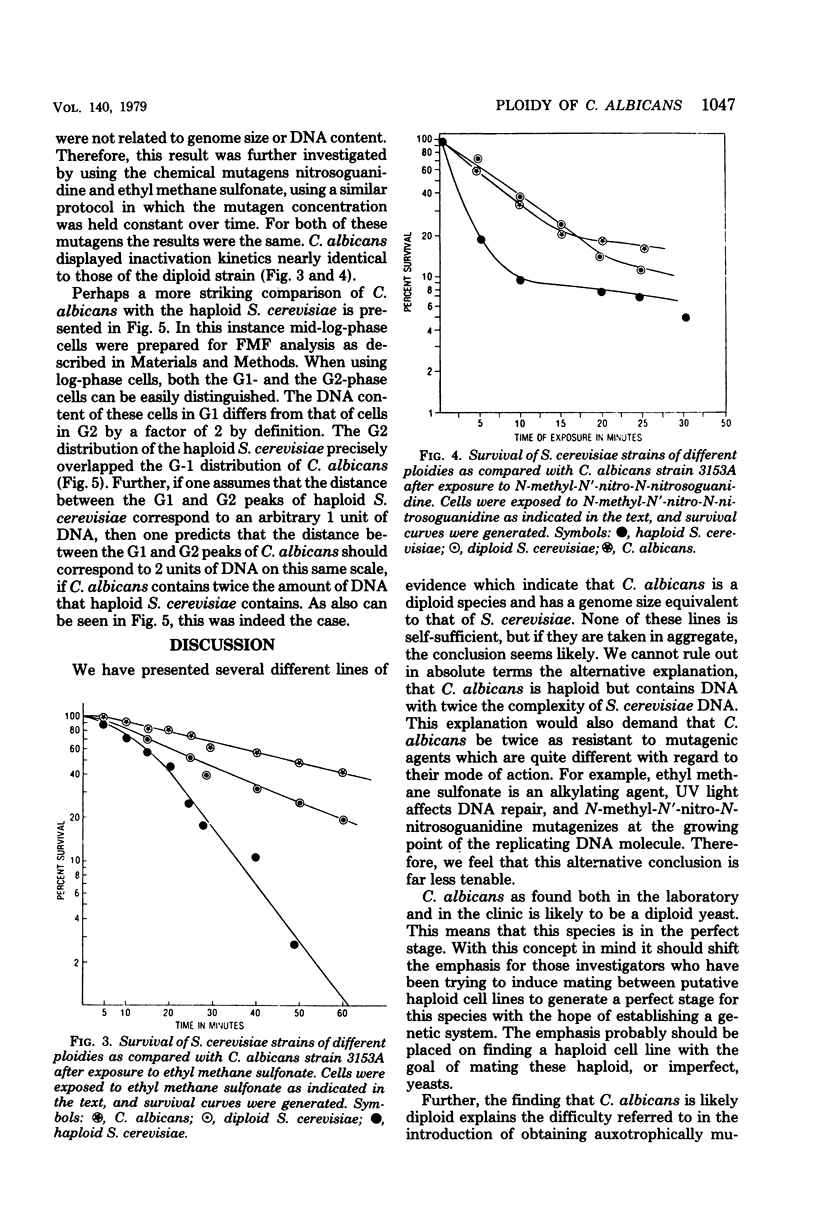
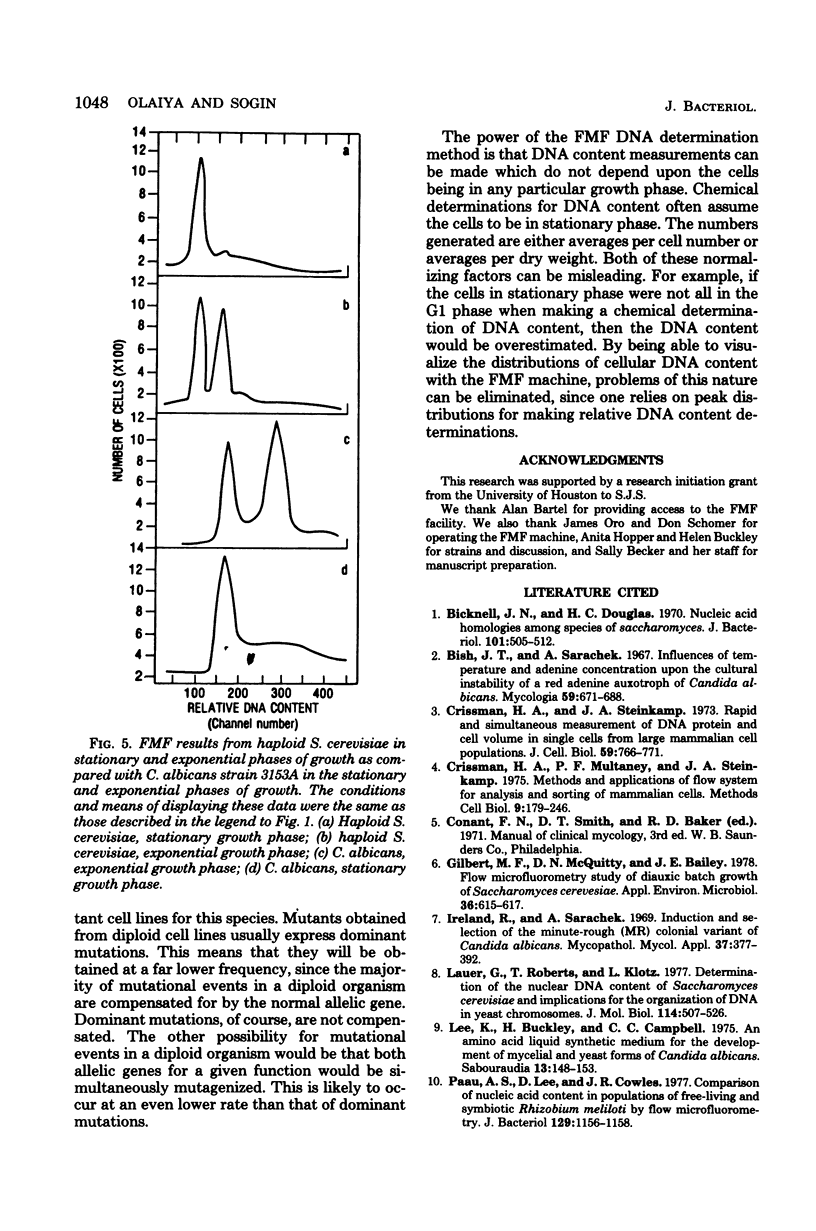
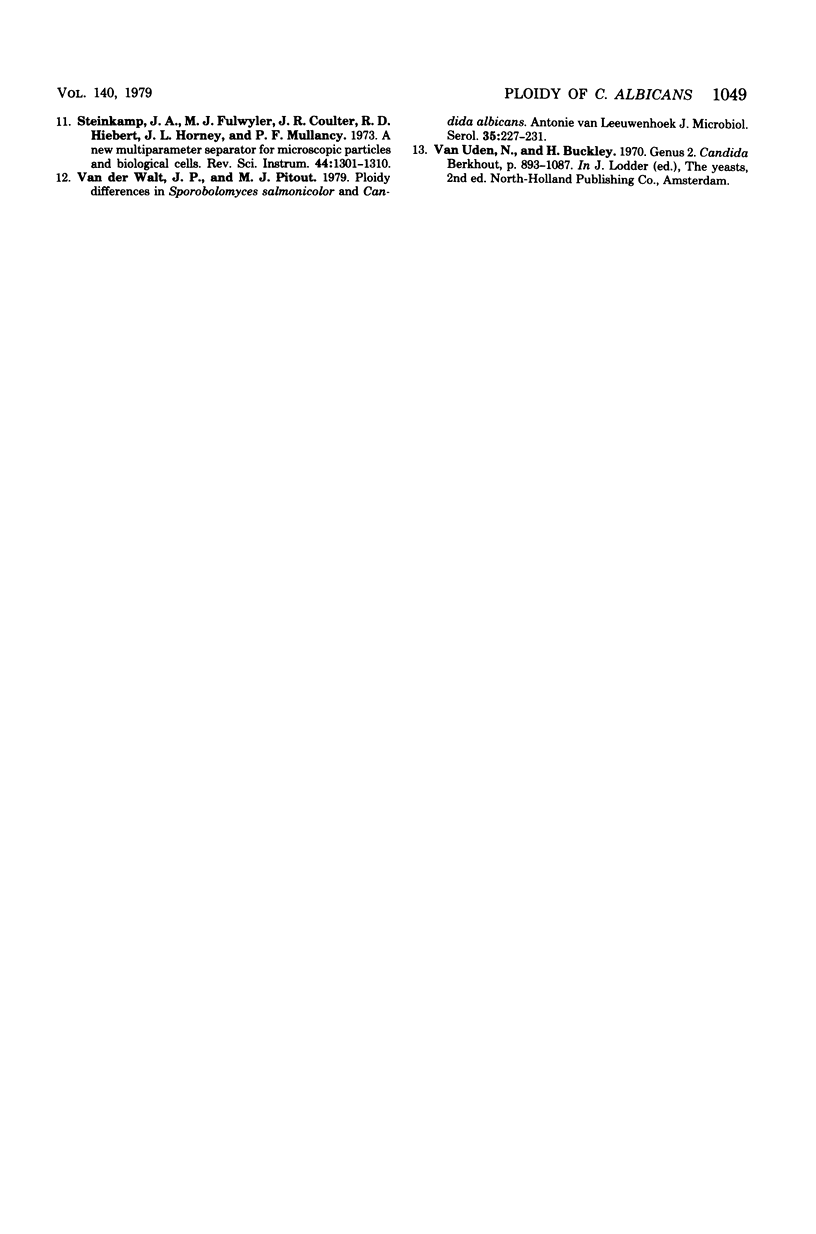
Selected References
These references are in PubMed. This may not be the complete list of references from this article.
- Bicknell J. N., Douglas H. C. Nucleic acid homologies among species of Saccharomyces. J Bacteriol. 1970 Feb;101(2):505–512. doi: 10.1128/jb.101.2.505-512.1970. [DOI] [PMC free article] [PubMed] [Google Scholar]
- Bish J. T., Sarachek A. Influences of temperature and adenine concentration upon the cultural instability of a red adenine auxotroph of Candida albicans. Mycologia. 1967 Jul-Aug;59(4):671–688. [PubMed] [Google Scholar]
- Crissman H. A., Mullaney P. F., Steinkamp J. A. Methods and applications of flow systems for analysis and sorting of mammalian cells. Methods Cell Biol. 1975;9(0):179–246. doi: 10.1016/s0091-679x(08)60076-x. [DOI] [PubMed] [Google Scholar]
- Crissman H. A., Steinkamp J. A. Rapid, simultaneous measurement of DNA, protein, and cell volume in single cells from large mammalian cell populations. J Cell Biol. 1973 Dec;59(3):766–771. doi: 10.1083/jcb.59.3.766. [DOI] [PMC free article] [PubMed] [Google Scholar]
- Gilbert M. F., McQuitty D. N., Bailey J. E. Flow microfluorometry study of diauxic batch growth of Saccharomyces cerevisiae. Appl Environ Microbiol. 1978 Oct;36(4):615–617. doi: 10.1128/aem.36.4.615-617.1978. [DOI] [PMC free article] [PubMed] [Google Scholar]
- Ireland R., Sarachek A. Induction and selection of the minute-rough (MR) colonial variant of Candida albicans. Mycopathol Mycol Appl. 1969 May 28;37(4):377–392. doi: 10.1007/BF02129886. [DOI] [PubMed] [Google Scholar]
- Lauer G. D., Roberts T. M., Klotz L. C. Determination of the nuclear DNA content of Saccharomyces cerevisiae and implications for the organization of DNA in yeast chromosomes. J Mol Biol. 1977 Aug 25;114(4):507–526. doi: 10.1016/0022-2836(77)90175-9. [DOI] [PubMed] [Google Scholar]
- Lee K. L., Buckley H. R., Campbell C. C. An amino acid liquid synthetic medium for the development of mycelial and yeast forms of Candida Albicans. Sabouraudia. 1975 Jul;13(2):148–153. doi: 10.1080/00362177585190271. [DOI] [PubMed] [Google Scholar]
- Paau A. S., Lee D., Cowles J. R. Comparison of nucleic acid content in populations of free-living and symbiotic Rhizobium meliloti by flow microfluorometry. J Bacteriol. 1977 Feb;129(2):1156–1158. doi: 10.1128/jb.129.2.1156-1158.1977. [DOI] [PMC free article] [PubMed] [Google Scholar]
- Steinkamp J. A., Fulwyler M. J., Coulter J. R., Hiebert R. D., Horney J. L., Mullancy P. F. A new multiparameter separator for microscopic particles and biological cells. Rev Sci Instrum. 1973 Sep;44(9):1301–1310. doi: 10.1063/1.1686375. [DOI] [PubMed] [Google Scholar]
- van der Walt J. P., Pitout M. J. Ploidy differences in Sporobolomyces salmonicolor and Candida albicans. Antonie Van Leeuwenhoek. 1969;35(2):227–231. [PubMed] [Google Scholar]


